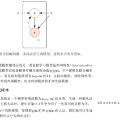Creating noise from data is easy; creating data from noise is generative modeling. We present a stochastic differential equation (SDE) that smoothly transforms a complex data distribution to a known prior distribution by slowly injecting noise, and a corresponding reverse-time SDE that transforms the prior distribution back into the data distribution by slowly removing the noise. Crucially, the reverse-time SDE depends only on the time-dependent gradient field (a.k.a., score) of the perturbed data distribution. By leveraging advances in score-based generative modeling, we can accurately estimate these scores with neural networks, and use numerical SDE solvers to generate samples. We show that this framework encapsulates previous approaches in diffusion probabilistic modeling and score-based generative modeling, and allows for new sampling procedures. In particular, we introduce a predictor-corrector framework to correct errors in the evolution of the discretized reverse-time SDE. We also derive an equivalent neural ODE that samples from the same distribution as the SDE, which enables exact likelihood computation, and improved sampling efficiency. In addition, our framework enables conditional generation with an unconditional model, as we demonstrate with experiments on class-conditional generation, image inpainting, and colorization. Combined with multiple architectural improvements, we achieve record-breaking performance for unconditional image generation on CIFAR-10 with an Inception score of 9.89 and FID of 2.20, a competitive likelihood of 3.10 bits/dim, and demonstrate high fidelity generation of $1024 \times 1024$ images for the first time from a score-based generative model.
翻译:创建来自数据的噪音很容易; 创建来自噪音的数据很容易; 创建来自噪音的数据是基因模型。 我们展示了一种随机差异方程式(SDE),它通过缓慢注入噪音,顺利地将复杂的数据分布转化为已知的先前分布,通过相应的反向时间SDE,通过缓慢去除噪音,将先前的分布转化为数据分配。 特别是, 反向时间SDE仅取决于周期性数据分布的基于时间的梯度字段(a.k.a.,评分) 。 通过利用基于分数的基因模型模型的进步,我们可以通过神经网络准确估算这些分数,并使用数字SDE解算法解算出样本。 我们显示,这个框架包含了先前在扩散概率性概率模型和基于分数的基因模型中采用的方法,并且允许新的采样程序。 特别是,我们引入了一个预测- 校正框架,以纠正离散的反向反时间模型的演变中的错误。 我们还从SDE的首次分布中提取了等量的神经内值, 使得精确的概率计算, 并改进了SDE 。 另外, 我们用一个基础的精确的直径直径直径直径直径的图像模型的模型展示了10-, 的模型的生成的模型的模型的模型的模型的模型的生成的生成的模型的生成的生成的模型, 。



